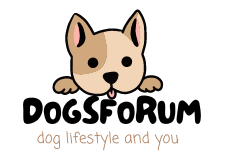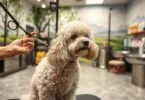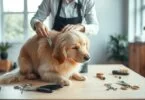Did you know only 30% of dog owners groom their pets regularly? The ASPCA suggests bathing dogs every three months. Some dogs need more baths, depending on their activities or skin conditions.
Dog grooming is key for your pet's health. It's not just about looks. It helps spot health problems early and keeps your dog happy.
Regular grooming is more than just baths. Different dogs need different grooming, like smooth-coated Chihuahuas or long-haired Yorkshire terriers. Knowing your dog's grooming needs can prevent skin problems, reduce shedding, and strengthen your bond.
Experts say a regular grooming routine is vital. Whether you're new to pet ownership or have experience, learning the right grooming techniques can greatly improve your dog's life.
In this guide, we'll share expert tips, tools, and practices. They'll help keep your dog's coat healthy, clean, and looking great.
Understanding Your Dog's Coat Type
Dog grooming is not the same for every dog. Each dog's coat is special and needs its own care. Knowing your dog's coat type is key to keeping them clean and healthy.
Different Coat Textures and Their Specific Needs
Dogs come in many coat types, each needing its own grooming. Short-coated dogs need brushing a few times a week. Long-coated dogs must be groomed daily to avoid tangles.
Medium-coated dogs have fur about an inch long and need regular grooming. Double-coated breeds, like Huskies, need daily brushing during shedding seasons. Curly-coated dogs, such as Poodles, require special grooming to keep their coat in shape.
Seasonal Coat Changes and Grooming Adaptations
Seasons change your dog's coat. In winter, dogs grow thicker fur for warmth. Pet salon experts say to adjust grooming for these changes.
During shedding seasons, brush your dog more often. Use the right tools to manage their coat. Some breeds, like wire-coated dogs, shed less and are good for people with allergies. Hairless breeds need sun protection and skin care.
Essential Grooming Tools for Dog Owners
Every dog owner needs a good grooming toolkit. It keeps their furry friend looking and feeling great. Professional groomers say the right tools make a big difference in grooming and health.
Brushes and Combs: Selecting the Perfect Match
Different coats need different brushes. Slicker brushes are best for medium to long-haired breeds. They remove tangles and loose fur.
Short-haired dogs do well with bristle brushes. These brushes get rid of dirt and spread natural oils. A good stainless steel comb with various attachments helps with many grooming tasks.
Clippers vs. Scissors: Precision in Dog Clipping
Choosing the right tools for dog clipping is key. Cordless clippers, like the Heiniger model, are great for mobility. They can last up to 4 years in professional use.
For delicate areas, use precision scissors. Tools with stainless steel blades ensure accurate and comfortable trimming.
Baths: Choosing Optimal Shampoos
Dog baths are more than just water and soap. Quality shampoos, like Wahl's Four in One Dog Shampoo, condition and detangle. Never use human shampoo on dogs, as their skin is different.
Between baths, grooming wipes keep dogs clean. They also prevent skin irritation.
Establishing a Grooming Routine
Creating a regular pet grooming routine is key for your dog's health and looks. Professional groomers suggest customizing your grooming to fit your dog's breed and coat. Regular grooming keeps your dog looking good and can stop expensive health problems.
Different dog breeds need different grooming styles. Short-haired dogs need brushing once a week. Long-haired breeds need daily brushing to avoid mats. Professional grooming services, costing $30 to $90 per session, offer expert care for complex coats.
Frequency of Grooming Based on Dog Breeds
Your dog's grooming schedule depends on several factors. Brush short-haired dogs 1-2 times weekly. Medium-haired breeds need 2-3 times weekly brushing. Long-haired dogs need daily brushing.
Bathing every 4-6 weeks keeps the coat healthy without removing natural oils. Nail trims every 3-4 weeks prevent paw damage.
How to Introduce Grooming to a Puppy
Start grooming early to make your puppy comfortable. Use positive reinforcement, treats, and gentle handling. Begin with short sessions and gradually increase the time.
Introduce grooming tools like brushes and nail clippers slowly. Make each experience positive and stress-free. Patience is essential for a smooth grooming routine.
How to Bathe Your Dog Effectively
Dog bathing is key to keeping your furry friend clean and healthy. It might seem simple, but it needs attention to detail and technique. Knowing the right way can make bath time enjoyable for both you and your dog.
Step-by-Step Bathing Process
First, gather all the supplies you need for the bath. Use lukewarm water and a dog shampoo that fits your pet's coat type. Brush your dog well before the bath to remove loose fur and prevent matting.
Wet your dog gently, avoiding the head first. Then, apply dog shampoo in small amounts. Work it into a gentle lather and massage it into your dog's coat. Be careful around the eyes, ears, and nose.
Rinse your dog thoroughly to remove all soap. This is important to avoid skin irritation.
Tips for Drying Your Dog after a Bath
Drying your dog properly is key to prevent skin issues. Use clean, absorbent towels to pat them dry. Avoid rubbing too hard.
If your dog is okay with it, use a pet-safe dryer on low heat. Long-haired breeds might need extra care to avoid tangles.
Most dogs need a bath every month. The frequency depends on their breed, activity level, and coat type. Always use dog-specific products and make bath time a positive experience with treats and gentle handling.
Nail Care: Keeping Your Dog's Paws Healthy
Keeping your dog's nails healthy is key to their care. It's not just about looks; it affects their comfort and health. Groomers stress the need for regular nail trims to avoid health issues.
Dogs need regular nail care to stay comfortable and healthy. Trimming should happen about once a month. But, dogs that walk on rough surfaces might need trims less often.
The Importance of Regular Nail Trimming
Long nails can cause big problems for dogs. They can curl under and hurt the paw pads. This can also affect a dog's walking and balance.
Professional groomers suggest trimming nails slowly to avoid hurting the quick. This part of the nail has blood vessels and nerves.
Tools for Nail Cutting and Grinding
Choosing the right tools for nail care is important. Nail clippers and grinding tools work differently for different dogs. Always have styptic powder ready to stop bleeding if needed.
If you're unsure about trimming nails, ask a groomer or vet for help. They can teach you how to do it right. Keeping your dog's nails in check is part of being a good pet owner.
Tackling Common Grooming Challenges
Dog grooming can be tough for pet owners. Each dog has its own coat needs. Matting and skin issues are big worries for your dog's health and comfort.
Dogs like Poodles, Shih Tzus, and Cocker Spaniels often get mats. Regular brushing is key to stop these tangles. Groomers say to brush 3-4 times a week to avoid mats.
Dealing with Matting and Tangles
Areas like behind ears and under collars easily get tangled. Salon experts recommend detangling sprays and soft brushing. If mats are bad, a pro groomer might be needed to avoid skin problems.
Skin Conditions and Grooming Best Practices
Keeping your dog's skin healthy is vital. Hot spots, allergies, and infections can come from bad grooming. A regular grooming routine and the right tools help. If unsure, talk to a pro groomer for special care.
Professional Grooming vs. DIY
Deciding how to care for your dog's coat is a big choice. Many pet owners think about using professional groomers or doing it themselves. Each option has its own benefits for your dog's health and looks.
Benefits of Professional Grooming Services
Professional groomers have skills that go beyond what you can do at home. They charge between $30 to $90 per visit and do a lot more than just a bath. They use top-notch tools and can do up to 10 grooming tasks, like checking for health issues.
When to Consider Taking Your Dog to a Groomer
Some dogs need to see a groomer more often than others. Dogs with long, thick fur need regular grooming to avoid tangles and keep their fur healthy. Groomers can spot health problems early that you might miss.
Think about taking your dog to a groomer if you don't have the right tools, are short on time, or have a dog with special fur needs. Even though about 60% of pet owners try grooming themselves to save money, professional groomers are better at keeping your dog looking and feeling great.
Additional Tips for a Healthy Coat
A vibrant, shiny coat shows your dog's health and happiness. Pet grooming experts say it's more than just brushing. Your dog's diet is key, with omega-6 and omega-3 fatty acids important for skin and hair.
Protein is vital for a healthy coat, making up 90% of it. Choose high-quality dog food with lots of protein and fatty acids. This helps prevent dry, dull fur. Experts suggest adding fish, fish oil, or flaxseed to your dog's diet to fight dry skin and hair loss.
Regular vet visits are important to catch skin and coat problems early. Issues like thyroid problems, parasites, or hormonal imbalances can harm your dog's coat. Also, keeping fleas and ticks away is key to avoid skin irritation and allergic reactions that can affect your dog's coat.
Pet grooming is about more than just looks. It's about nutrition, exercise, and health care. A well-rounded care routine helps your dog stay healthy and shiny, showing their wellness and energy.











Leave a Comment